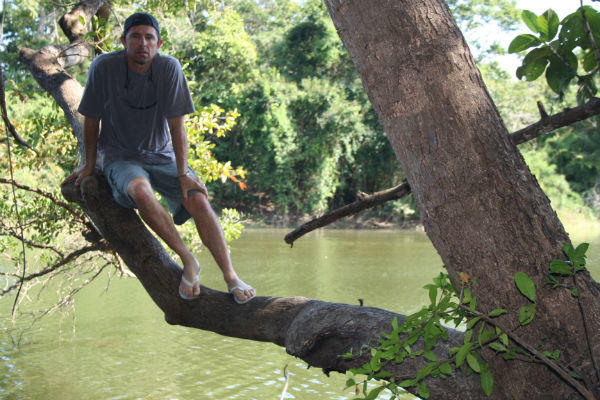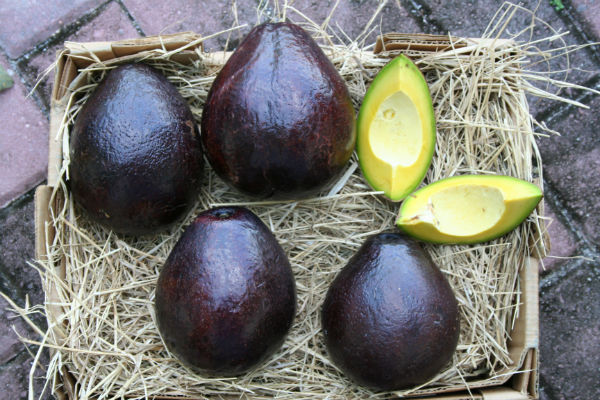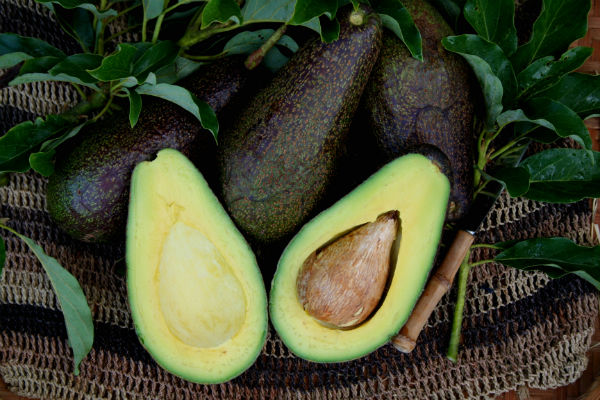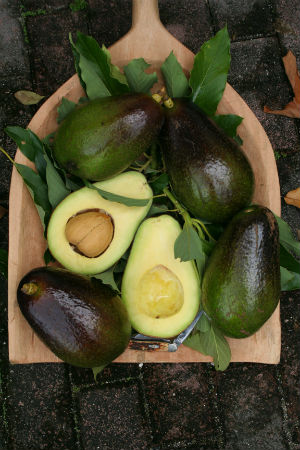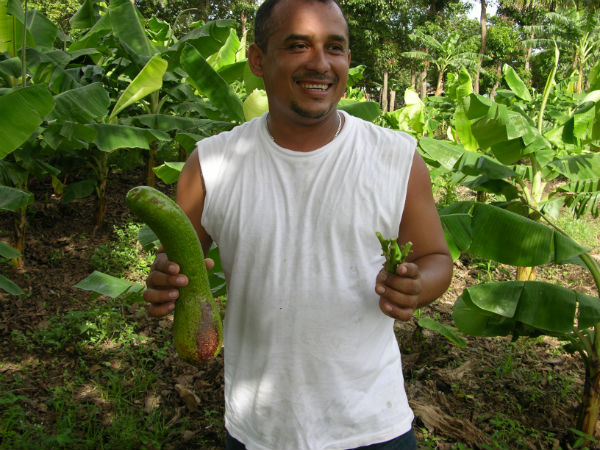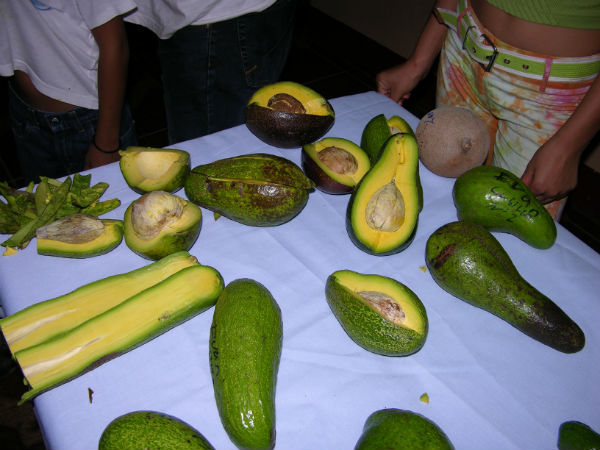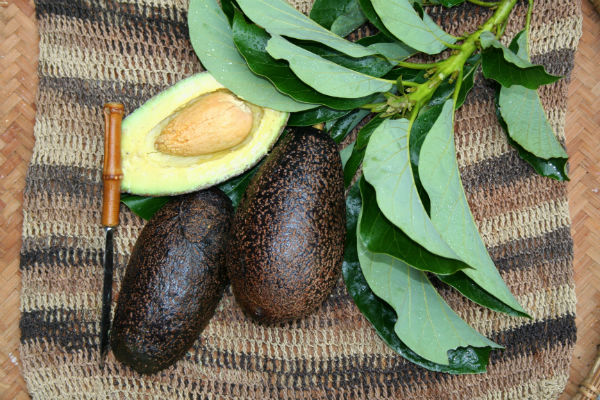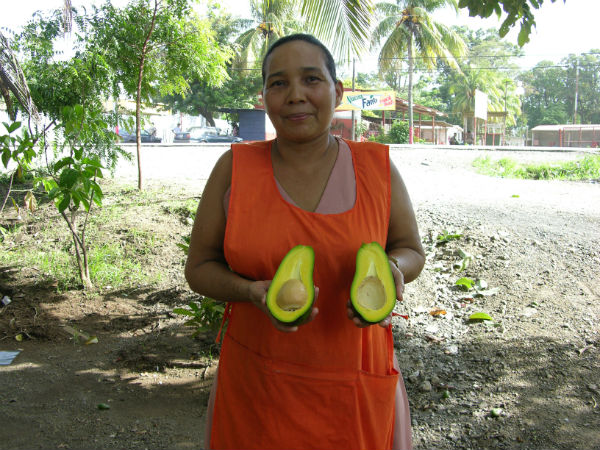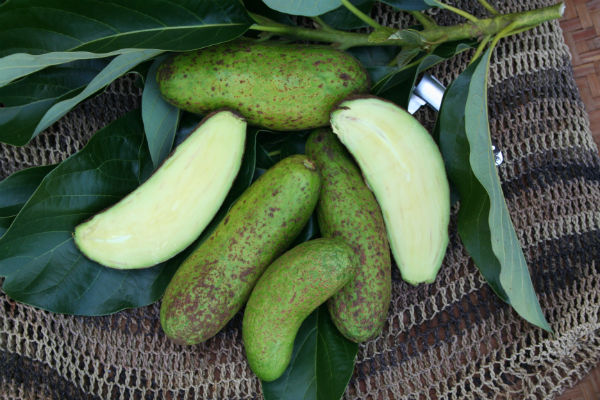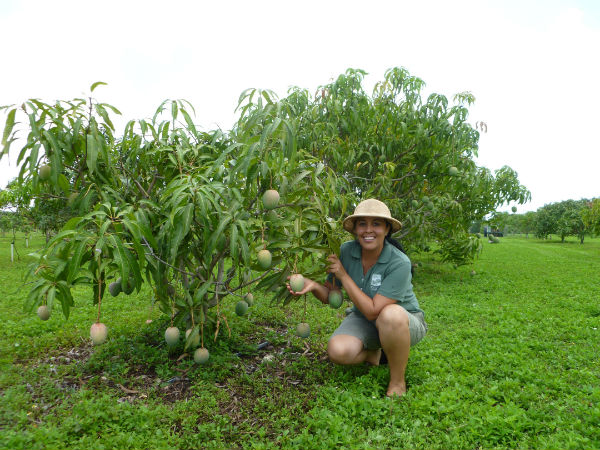The World’s Rarest Avocados
And the men and women who are trying to collect all of them—before it’s too late.
Each tree that Richard Campbell walks past in the Florida orchard where he works reminds him of a person, a place, and a story. One of Campbell’s favorite botanical biographies here is that of the Blas avocado, a large green-skinned fruit with flesh as runny as warm butter. He first found the tree about a decade ago in a village called San Mateo in the coastal lowlands of Costa Rica. According to local lore, the tree—a gnarly old giant with smooth skin and olive-green, half-moon leaves—had grown from an avocado pit discarded more than a century before. The tree’s fruit had garnered such regional fame that some people would travel nearly 100 miles during harvest time to collect piles of it in oxcarts.
Campbell located the owner of the tree and got his permission to remove several branch tips for grafting. Today, two clones of the original grow in the Fairchild Tropical Botanic Garden in Coral Gables, Fla., where Campbell and several other fruit collectors have established a vast collection of tropical tree fruits, including mangos, jackfruits, mamey sapotes, and durians. There are some 200 varieties of avocados alone, most of them collected by Campbell and his frequent collection partner, Noris Ledesma, between 2002 and 2008 on a series of expeditions to Central America and the Caribbean. This region, bounded by Hispaniola, Panama, and southern Mexico, is the place of wild origin of the West Indian avocado. This subspecies of Persea americana, or the common avocado, is distinguished by its fruit’s smooth green skin, low oil content, sweet and juicy flesh, and large size—usually more than a pound in weight. For many people in Latin America, this fruit is a dietary staple, often used in smoothies, ice cream, avocado mousse, and even juice. (By contrast, the popular Hass avocado—a hybrid of the Mexican and Guatemalan subspecies—has thick, oily meat, well suited for guacamole.)
Florida farmers have grown West Indian avocados for years, though only a few varieties. Campbell and Ledesma believe that thousands more exist in the coastal areas south of the Bahamas. Here grow native avocado varieties that occur nowhere else in the world, making them especially valuable to geneticists seeking to preserve and study rare plants. Campbell and Ledesma’s goal is to collect as many of these undiscovered avocado types as possible and preserve them in the Fairchild collection. This ambition is not merely the product of aesthetic appreciation of the fruit. In truth, thanks to development, deforestation, and climate change, avocado breeds are disappearing more quickly than Campbell and Ledesma can collect them, and many types could disappear before they are even discovered.
Fruit collectors have been embarking on exotic tree-hunting safaris for centuries. The first leg of the famously doomed 1787 voyage of Lt. William Bligh on the soon-to-be-mutinied HMS Bounty was, in fact, a mission to collect breadfruit saplings in Tahiti. Bligh’s assignment was to transport the young trees from the Pacific to the Caribbean and thereby introduce a new source of food to the islands’ slave camps. A century later, the U.S. Department of Agriculture sent several explorers to Turkey, Greece, Italy, and North Africa in search of desirable fig varieties, with the hope (ultimately successful) of launching a profitable industry in the similar climes of California. At about the same time, David Fairchild, for whom the Fairchild Garden is named, was conducting his own exotic plant exploration for the United States government. Fairchild ultimately helped introduce pistachios, nectarines, Chinese soy beans, and mangos to Americans.
Today, scientists from many nations continue the hunt for new or exotic plants. Carrying GPS locators and traveling in jeeps, they pursue wild seedlings or unknown cultivated varieties throughout Asia, equatorial Africa, and Latin America and bring their finds back for propagation in botanical collections. The Fairchild Garden is just one facility of its sort. A vast apple collection in upstate New York, managed jointly by Cornell University and the USDA, includes some 8,000 accessions. Near Sacramento, Calif., the USDA and UC-Davis co-manage an orchard containing thousands of grape, walnut, almond, kiwi, persimmon, and fig varieties, among others. And in Corvallis, Ore., another government-university collection includes blackberries, raspberries, hazelnuts, and hops. The United States isn’t the only player in this game, either: The Greek government, for example, keeps a huge assortment of olive trees near Kalamata.
These collections, and many others like them, are genetic libraries that preserve natural diversity within species and offer farmers new varieties to grow and sell. (Even home gardeners may access many of the plants grown at these facilities.) Perhaps more importantly, varietal plant collections provide genetic building blocks for the use of fruit breeders, many of whom work with the USDA to develop tastier and higher-yielding fruits. Other breeders focus on creating disease-resistant or drought-tolerant varieties, both increasingly important as climate change begins to pose new challenges for farmers.
Plant-collecting outings are usually focused on known regions of indigenous abundance. For example, a major hotspot of apple and walnut diversity lies in Asia’s Caspian and Aral basins, where many thousands of wild and cultivated varieties grow. Explorers targeting grapes have traveled in the Republic of Georgia, while those seeking bananas have looked to Southeast Asia and Central Africa. Typically the most valuable material is found in wild forests and other wilderness regions, though populated areas are often the best places to look for high-quality fruits, since local people have usually already found (or bred) their region’s most appealing varieties.
While jetlagged collectors can make valuable finds by driving rental cars through towns with one eye peering over fences and into backyards, an even better place to begin a fruit-hunting trip is a village’s farmers market or bazaar. Here, among the many piles and crates of local fruits and vegetables, may dwell treasures—fruits harvested from backyard trees that aren’t known outside the region. When hunting for new avocados, Campbell and Ledesma browse such outdoor markets in search of fruits with outstanding physical features. “We basically want trees that have unusual fruit—whether long, big, purple-skinned, without a seed, whatever,” Campbell explains.
If the local market lacks interesting fruits, Campbell and Ledesma may work a trick that has many times drawn great avocados out from hiding: They drive slowly through the dirt streets of a village and, using a bullhorn, invite all the locals to bring their homegrown avocados to a weekend fruit competition, at which the best avocado will win its owner a new bicycle, previously purchased at a local shop on the expedition’s expense account. A small crowd of locals, Campbell says, is almost sure to gather at the appointed place with samples of their backyard fruits.
The next step is tracing an interesting fruit back to the tree from which it was picked—an often challenging feat that may depend on the assistance of a local guide familiar with the region’s geography and its farmers. Even after the collector has pinpointed the location of a tree, another hurdle may be convincing its owner to allow branches to be cut. “They’re often worried that we’re trying to put them out of business or that they’ll lose their income if they give us any wood,” Campbell says. Sometimes, befriending locals in the village bar over several rounds of beer can do the trick. And to quell any lingering suspicions, Campbell usually provides written assurances of royalties on fruit sales should the tree ever become a cultivated commercial variety.
Through their many expeditions and negotiations, Campbell and Ledesma have brought some knockout avocados back to the Fairchild Garden. There is one they found in a backyard garden in Rivas, Nicaragua called the Pura Vida. The Pura Vida bears gourd-shaped fruits averaging 18 inches in length, with some growing as long as 3 feet. Then there’s the Juan Jose, an avocado Campbell and Ledesma found growing on a tree in Costa Rica and whose fruits contain no seed at all—just light, creamy flesh within a soft, green skin. Campbell and Ledesma dubbed another the “car wash avocado” after the rural outpost where they found the tree growing in Guatemala. Similarly, there are two “truck stop avocados,” each collected from a roadside truckers’ café in Guatemala.
Other fruit collectors have favorite stories from the hunt, too. USDA researcher John Preece tells of the seeds he culled from a grove of wild olive trees growing amid the ruins of the ancient Roman city of Butrint in Albania. He had seen the trees on a hillside from the distance, and access could only be gained by paying the admission fee to the popular tourist attraction. On the same trip, Preece followed a trail of rumors to locate a bizarre walnut with three kernels inside the shell instead of the usual two—not necessarily a walnut with commercial potential but certainly one of interest to a plant geneticist. This summer, USDA geneticist Malli Aradhya was touring Azerbaijan on the hunt for stone fruits, pomegranates, and figs—but the local government-run fig orchard was crawling with deadly gurza vipers. Four groundskeepers had already been struck that summer. Aradhya decided not to test his luck.
Deliberating whether or not to enter a snake-infested orchard to sample figs may seem crazy, but there’s urgency in the work of Aradhya and other fruit collectors. In many centers of diversity, like Southeast Asia, Kazakhstan, and Central America, logging operations threaten to eliminate fruits before they’ve ever been discovered or tasted, let alone cataloged or named. Large-scale agriculture is a threat, too: Cotton farms in Nicaragua, pineapple fields in Costa Rica and Panama, and oil-palm plantations in Southeast Asia have replaced virgin forest and jungle, eliminating endemic treasures that will now never be known. As Campbell explains, “Big plantation agriculture is deadly to genetic resources of tree fruits.”
As a result of deforestation, many of the parent trees from which Campbell and Ledesma originally acquired their accessions are now gone—mostly cut down by their owners and sold for lumber. This leaves some of the avocados growing in the Fairchild collection absolutely unique, bearing genes and fruit that now exist nowhere else. The security of the collection will improve as area farmers and gardeners adopt Fairchild’s avocados into their own orchards.
Certain governments have grown uncooperative with out-of-country agricultural explorers, whether because of political strife or because they recognize the financial value of plant genetics. But plant trade continues freely over many borders, and Campbell and Ledesma recently embarked on a 10-day mango hunt in Borneo. Here, valuable genetic material embedded in the wood, leaves, and fruits of wild trees, is threatened by chainsaws advancing into the jungle. Lumber hunters also scout villages in Borneo and other areas where large backyard fruit trees are increasingly considered more valuable as wood than as producers of a household’s food. For every fruit tree saved by the world’s plant collectors, many others are sold by their owners to sawmills. Tree stumps in front yards, and village markets stockpiled with imported foods, tell this quiet story.
“In some of these places, it’s an emergency,” Ledesma says. “We have to find the surviving trees and bring them home before they disappear. The time is right now.”
